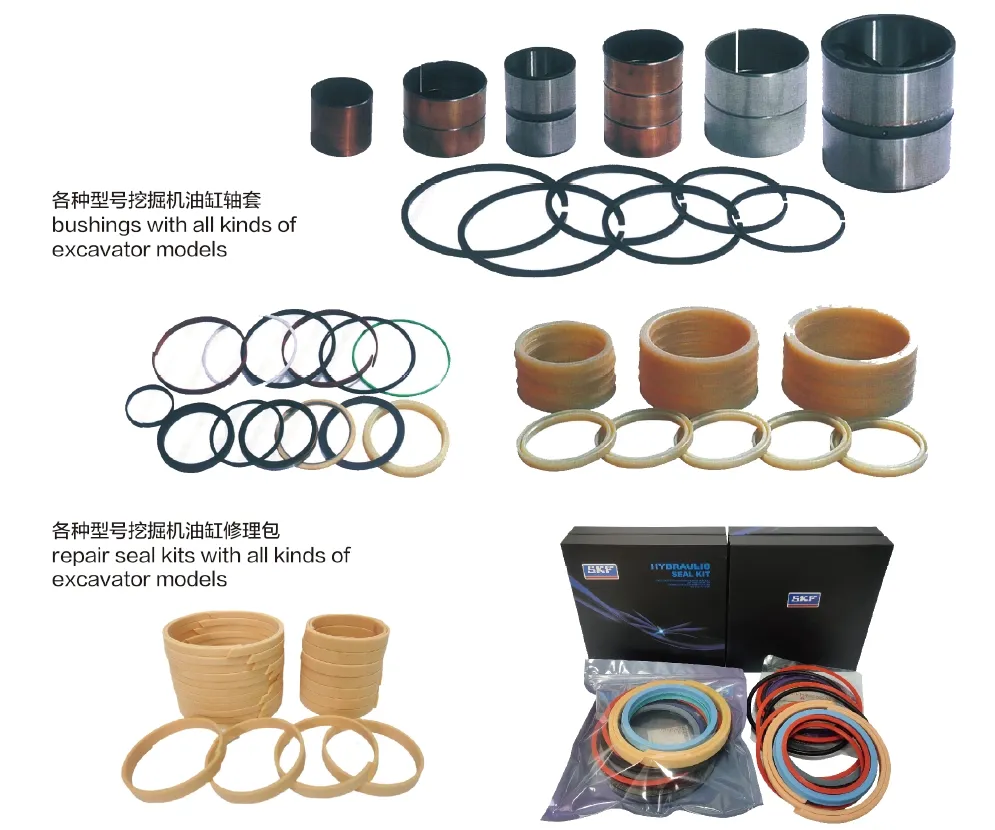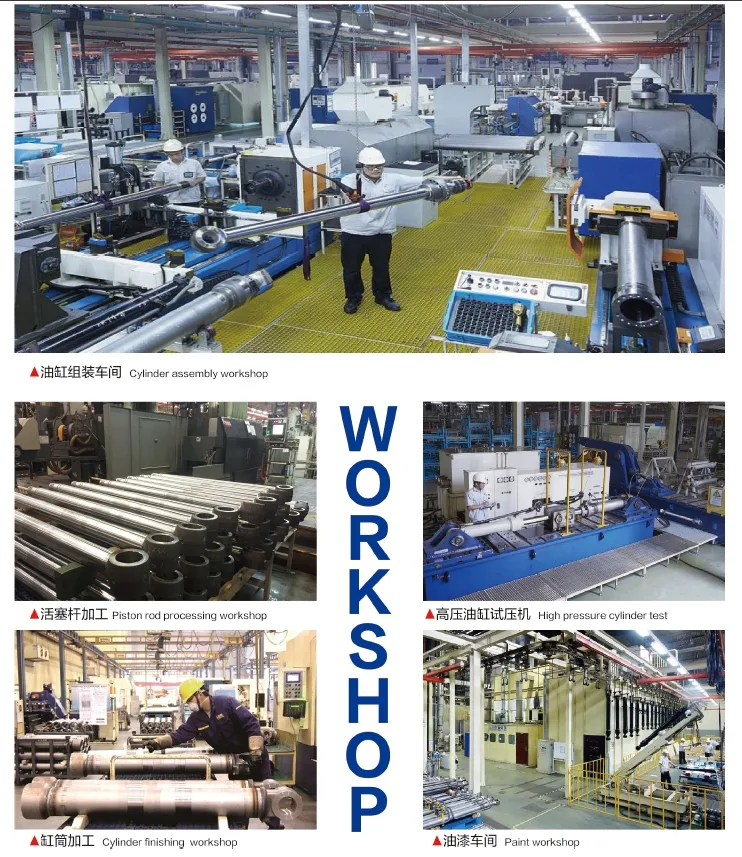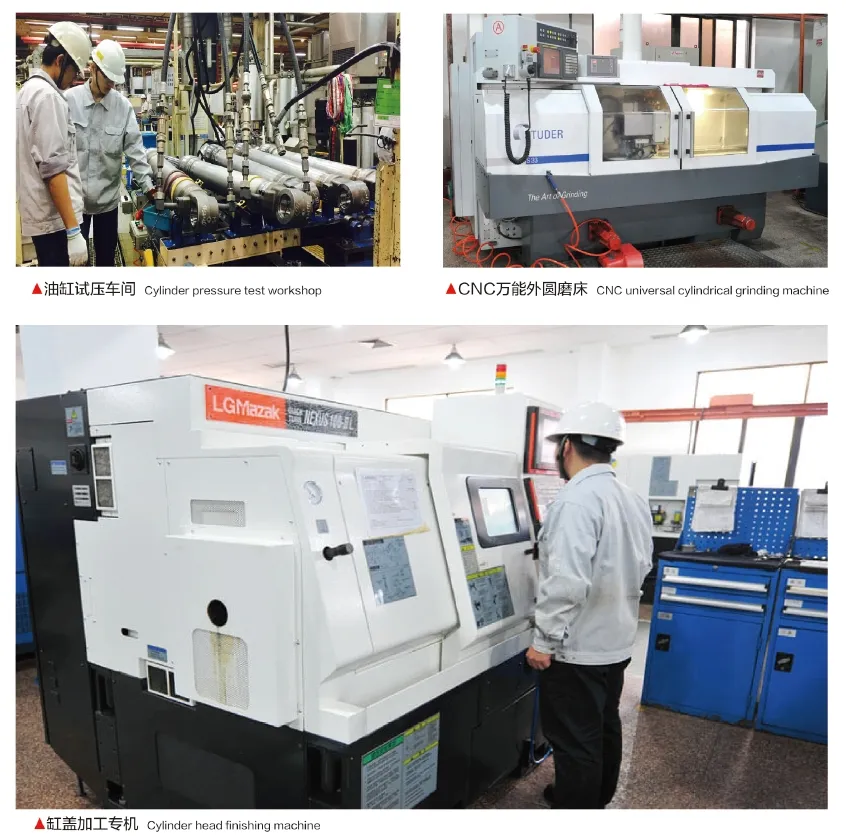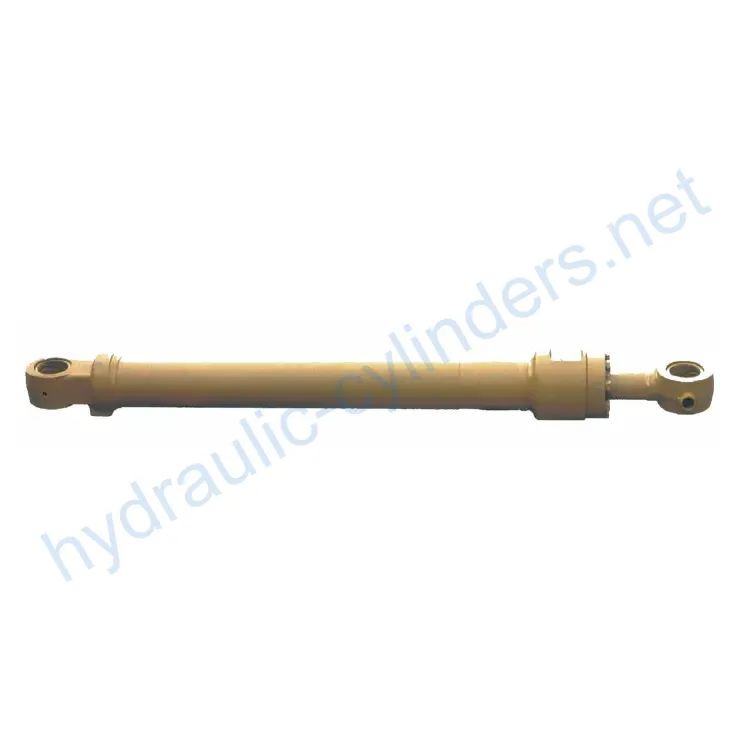Boom Cylinder For Sinomach ZG3210-9C
As one of the hydraulic cylinders manufacturers, suppliers, and exporters of mechanical products, We offer hydraulic cylinders and many other products.
Please get in touch with us for details.
Mail:sales@hydraulic-cylinders.net
Manufacturer supplier exporter of hydraulic cylinders.
Boom Cylinder For Sinomach ZG3210-9C
Product Overview
The Boom Cylinder for Sinomach ZG3210-9C is a hydraulic cylinder specifically designed to control the movement of the bucket in various heavy machinery such as excavators, backhoe loaders, and front loaders. This robust component enables the operator to lift, lower, and tilt the bucket, facilitating efficient material handling tasks. The bucket cylinder is essential in hydraulic systems, delivering the necessary force to perform critical functions in construction and agriculture.

Features of the Boom Cylinder
- High Strength and Durability: Constructed from high-strength steel or aluminum, this cylinder can withstand high pressure and heavy loads, making it suitable for harsh working environments. Its design considers wear resistance and corrosion resistance, extending its lifespan.
- Efficient Hydraulic Operation: Utilizing hydraulic oil pressure, the cylinder provides smooth extension and retraction actions, quickly responding to control commands and delivering powerful push and pull forces, ideal for handling heavy and complex tasks.
- Variety of Types: Available in both single-acting (using hydraulic in one direction) and double-acting (using hydraulic in both directions) configurations to meet diverse operational needs. Some models are telescopic, allowing for greater extension without increasing external dimensions, suitable for applications with limited space.
- Precision Engineering: The design includes precision machining for greater efficiency and reliability, resulting in a product that performs consistently under varying loads and conditions.
- Customizable Solutions: We can manufacture this product to perfectly replace existing hydraulic cylinders, catering to specific requirements and specifications.

Applications of the Boom Cylinder
Construction Equipment
In excavators, the boom cylinder is crucial for digging, loading, and moving soil or debris. It enables the bucket to move efficiently, allowing for precise operations in construction sites. The cylinder’s reliability ensures that the excavator remains operational, handling the demands of heavy lifting and maneuvering.
Agricultural Machinery
For front-end loaders, the boom cylinder plays a vital role in scooping, lifting, and transporting soil, hay, and other materials. Its ability to handle substantial loads increases productivity on farms, allowing operators to perform tasks with speed and efficiency, thus improving overall workflow.
Excavating Machines
In excavators, the bucket cylinder facilitates the digging action by allowing the bucket to penetrate the ground effectively. This hydraulic mechanism ensures that heavy materials are easily excavated and transported, making it an indispensable component for earth-moving machinery.
Loaders
In front loaders, boom cylinders assist in lifting and dumping loads efficiently. Their robust design ensures that heavy materials can be handled safely, providing operational ease and reducing the risk of equipment failure during critical lifting operations.
Design Considerations and Selection Criteria
Load Capacity
The load capacity of the boom cylinder is a crucial consideration. It must be designed to handle the maximum load expected during operations without risk of failure. Engineers must take into account the weight of the materials being lifted and the dynamic forces that occur during operation. This ensures that the cylinder can perform safely under high-stress conditions.
Sealing Performance
Sealing performance is vital for the longevity and efficiency of hydraulic cylinders. Proper sealing prevents hydraulic fluid leaks, maintaining the system’s pressure and performance. Selecting high-quality seals made from durable materials such as polyurethane or nitrile rubber can significantly enhance the cylinder’s reliability, especially in demanding environments.
Durability
Durability is a critical factor in the design of boom cylinders. They must withstand harsh environmental conditions, including exposure to dirt, debris, and extreme weather. A well-designed cylinder will feature a robust structure and protective coatings to resist wear and corrosion, ensuring a longer service life and reducing maintenance costs.
Safety Features
Safety is paramount in any hydraulic system. The design of the boom cylinder must include features that prevent accidental movement and ensure operator safety. This can include pressure relief valves and fail-safe mechanisms that activate in case of system failure, providing added protection during operations.
Maintenance Accessibility
Designing for maintenance accessibility is crucial for the longevity of the hydraulic cylinder. It should allow easy access to critical components for inspection, lubrication, and replacement. A design that considers maintenance can greatly reduce downtime and operational costs, ensuring that machinery remains in optimal condition.

Sealing and Lubrication
Effective sealing and lubrication are integral to the performance of the boom cylinder. Various sealing elements, including piston seals and rod seals, are employed to prevent fluid leaks and maintain pressure. The selection of durable materials such as polyurethane and nitrile rubber can enhance wear resistance. Additionally, the cylinder body and threaded end surfaces undergo fine processing to improve wear resistance. Regular lubrication with hydraulic oil is necessary to ensure smooth operation and prevent wear on moving parts, which is essential for maintaining optimal performance over time.
Regular Inspection and Preventive Maintenance Measures
- Visual Inspections: Conducting regular visual inspections of the boom cylinder can identify signs of wear, leaks, or damage. Addressing issues early can prevent larger failures.
- Lubrication Checks: Ensure that the cylinder is adequately lubricated according to the manufacturer’s specifications. Insufficient lubrication can lead to increased wear and premature failure.
- Seal Replacement: Regularly check and replace seals as needed to maintain hydraulic integrity. Worn seals can lead to fluid leaks and reduced efficiency.
Installation Guidelines
Proper installation of the boom cylinder is crucial for optimal performance. Before installation, ensure that all components are clean and free from contaminants. Begin by aligning the cylinder correctly with the mounting brackets, using appropriate installation fixtures to secure it in place. It is essential to follow the manufacturer’s torque specifications when tightening bolts to ensure a secure fit. Additionally, check the alignment of hydraulic lines and ensure they are not kinked or damaged. After installation, conduct a thorough inspection and test the system under low pressure to verify the integrity of the installation before use. Regular follow-up inspections can help ensure continued performance and safety.
Common Maintenance Tasks
- Regular Inspections: Performing routine inspections is vital to identify potential issues before they escalate. Look for signs of wear, leaks, or unusual noises during operation. These checks should be performed at regular intervals to ensure the cylinder operates safely and efficiently.
- Proper Lubrication: Adequate lubrication is crucial for the longevity of the boom cylinder. Ensure that the hydraulic oil is at the recommended level and is of the correct viscosity. Regularly check and maintain lubrication points to reduce friction and wear on the internal components.
- Seal Replacement: Monitor the condition of seals regularly. Worn or damaged seals can cause fluid leaks and impair hydraulic performance. Establish a routine replacement schedule for seals to maintain optimal functionality and prevent costly downtimes.
Correct installation, lubrication, and alignment are critical to ensuring the longevity and performance of the boom cylinder. Use appropriate mounting brackets to secure the cylinder firmly, and follow manufacturer guidelines for maintenance and repairs. Engaging in proactive maintenance practices can significantly enhance the lifespan and efficiency of the hydraulic systems.

Safety Considerations and Environmental Factors
When utilizing boom cylinders, safety measures are paramount to ensure the well-being of operators and surrounding personnel. Proper training on the operation of hydraulic machinery is essential, and all safety protocols should be strictly followed. This includes using personal protective equipment (PPE) and adhering to safe operating procedures. Environmental factors should also be considered, ensuring the hydraulic fluids used are environmentally friendly and that any spills are promptly managed to minimize ecological impact.
Fault Diagnosis and Common Issues
- Leakage Problems: Fluid leaks can indicate worn seals or damaged components. Regular inspection and prompt repairs can address these issues effectively.
- Uneven Movement: If the boom cylinder operates unevenly, it may suggest air in the hydraulic system or improper fluid levels. Bleeding the system and checking fluid levels can resolve this problem.
- Excessive Noise: Unusual noises during operation can indicate internal issues. Inspecting for loose components or signs of wear can help identify the root cause.
Troubleshooting Tips
For effective fault diagnosis, assess the cylinder’s performance regularly and log any irregularities. If leaks are detected, inspect seals and connections first. To remedy uneven movement, ensure the hydraulic fluid is at the correct level and bleed the system to remove any trapped air. Address excessive noise by examining the assembly for loose parts and tightening as necessary. Preventive measures, such as scheduled maintenance and timely repairs, can significantly reduce the likelihood of encountering these issues.

About Our Company
We are a leading manufacturer of replacement hydraulic cylinders, offering a comprehensive range of products that have positioned us as one of the foremost suppliers in both domestic and international markets. Our commitment to excellence in quality is supported by a refined manufacturing management strategy, leveraging advanced technical talent, high-end digital manufacturing equipment, and professional testing systems. This focus on innovation and quality ensures that we consistently meet the diverse needs of our customers.
Our expertise extends to providing customized solutions tailored to specific operational requirements. We hold international certifications and maintain stringent quality control processes, ensuring that our products meet global standards. In addition, our production facilities are equipped with cutting-edge technology that enhances efficiency and precision in manufacturing. Coupled with robust after-sales support, we are dedicated to building long-term relationships with our clients through reliable service and high-quality products.


Author: lyl
Take a Tour of Our VR Factory:
Take a tour of our VR factory with the following
Hydraulic Cylinder Application:


